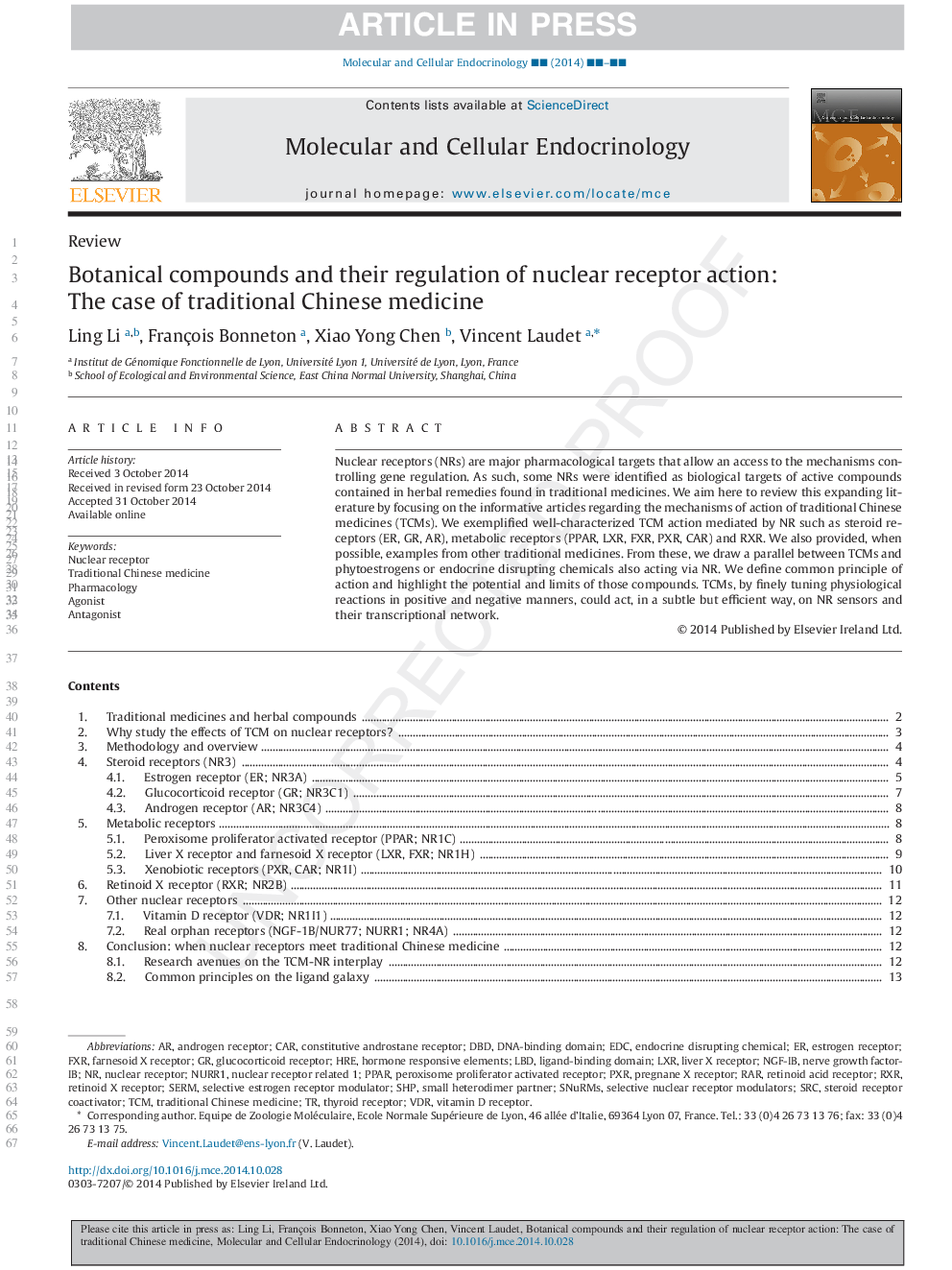| Article ID | Journal | Published Year | Pages | File Type |
|---|---|---|---|---|
| 8477068 | Molecular and Cellular Endocrinology | 2015 | 17 Pages |
Abstract
Nuclear receptors (NRs) are major pharmacological targets that allow an access to the mechanisms controlling gene regulation. As such, some NRs were identified as biological targets of active compounds contained in herbal remedies found in traditional medicines. We aim here to review this expanding literature by focusing on the informative articles regarding the mechanisms of action of traditional Chinese medicines (TCMs). We exemplified well-characterized TCM action mediated by NR such as steroid receptors (ER, GR, AR), metabolic receptors (PPAR, LXR, FXR, PXR, CAR) and RXR. We also provided, when possible, examples from other traditional medicines. From these, we draw a parallel between TCMs and phytoestrogens or endocrine disrupting chemicals also acting via NR. We define common principle of action and highlight the potential and limits of those compounds. TCMs, by finely tuning physiological reactions in positive and negative manners, could act, in a subtle but efficient way, on NR sensors and their transcriptional network.
Keywords
Nurr1RARRXRLXRPXRFXRSERMHRERetinoid X receptorPPARSHPLBDDBDEDCRetinoid Acid Receptorfarnesoid X receptorDNA-Binding Domainligand-binding domainsmall heterodimer partnerendocrine disrupting chemicalCARSelective estrogen receptor modulatorliver X receptorconstitutive androstane receptorAndrogen ReceptorEstrogen receptorPeroxisome proliferator activated receptorPregnane X receptorglucocorticoid receptorNuclear receptor
Related Topics
Life Sciences
Biochemistry, Genetics and Molecular Biology
Cell Biology
Authors
Ling Li, François Bonneton, Xiao Yong Chen, Vincent Laudet,
